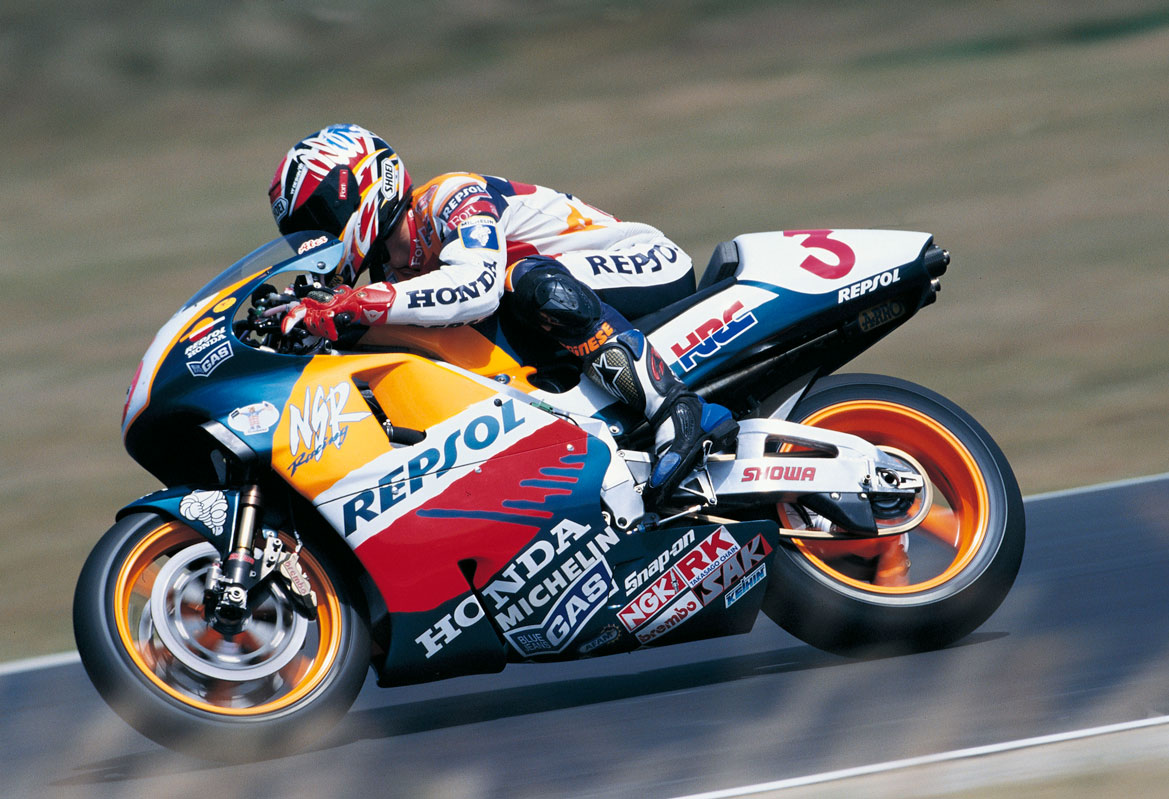Let us go all the way back to 1949, to the origins of the Motorcycling World Championship. At the time, the motorcycles used were generic models that were available in the market and not the racing prototypes currently used. These motorcycles had no aerodynamic fairings of any sort and all variations among competitors stemmed from the work of the teams, as the involvement of manufacturers in the process was still very limited. At any rate, there was little that could actually be modified, as the only bodywork pieces in those motorcycles were simple mudguards and, at most, a small plaque affixed to the headlight where the rider’s number appeared.


But it would not be long before motorcycles with enhanced fairings that protected the rider and improved the vehicle’s aerodynamics began to be seen. Some manufacturers, such as NSU and Moto Guzzi, began to produce complete fairings that covered the front wheel of the bike, and to give their models a more aggressive design. The improvement in terms of performance was such that it prompted the competition to begin developing their own fairings.
The absence of any aerodynamic regulations led to the creation of increasingly dangerous motorcycles. Though fast, they were highly vulnerable to lateral winds, such that the FIM decided to prohibit these types of designs, barring manufacturers from covering the front wheel with the fairing and leading to the creation of a motorcycle design that has been used since the close of the 1950s to the present day.


Following the decision regarding what motorcycle fairings would be like and what their general characteristics would be, manufacturers began to refine their designs more and more, seeking to gradually improve the vehicles’ aerodynamic features. But, in contrast to four-wheeled vehicles, where it is simpler to apply elements that prove efficient in terms of improving grip or refrigeration, these types of pieces can have negative results in motorcycles. As the motorcycle leans to one side, the aerodynamic effects can give rise to unwanted forces and make the rider lose control of the vehicle.
At the close of the 1970s and 1980s, we began to witness the appearance of windscreens with more refined designs, modified mudguards, and fairings with air supplies or perforations at different areas – all of them aimed at increasing the motorcycle’s top speed by s a few km/h. At the time, manufacturers were more interested in improving speed than the stability of the bike’s front end.
Different designs would be tested in the 1990s and 2000s but, owing to the increasingly sophisticated electronics incorporated into the motorcycles, aerodynamic design was not exactly making up for the shortcomings that bikes still show today.


As the power afforded by modern competition engines grew, motorcycles began to show a tendency to do wheelies at maximum speed (even above 200 km/h!). In addition, current electronics (which are more limited since the introduction of the single ECU) only allow for a very basic “anti-wheelie“. The improvement of brakes and increase in the maximum track speeds made it imperative for manufacturers to enhance the grip of the bike’s front end during braking.
The solution appeared simple and, in 2015, we began to see small wings made of carbon fibre, attached to the fairing and windscreen of the motorcycles. The aerodynamic braking caused by these elements was compensated for by the extra power afforded by the 1000 cc engines, but the balance between the efficiency achieved when riding in a straight line and the problems generated during curves was very delicate. More months of testing and research would be needed to refine these types of additions.
It would also not be long before the FIM noted an additional problem stemming from all of these wings and winglets, namely, the riders’ safety. When the bikes leaned to one side, there were occasions in which the rider could make these additions rub against the curbstones, or worse, other riders. The possibility of striking a competitor made these elements a potential source of injury.


In 2017, new regulations barred the use of wings or winglets and began requiring that these type of elements form an “enclosed” whole that was part of the fairing. We began to see a whole array of ideas, shapes, and sizes. But this would not be the FIA’s last word on the matter and, in 2019, it again revised the restrictions places on these types of elements. On this occasion, it would restrict the size and shape of the fairing and mudguard, such that, in order to have these parts approved, a motorcycle was required to fit in a “calibrator”, set at the maximum measurements and stipulated shape, without issue.
Another novel regulation (which continues to be in effect) established that teams could only have two different fairings and mudguards, and that aerodynamic elements could not be removable.
We should bear in mind that these devices must generate a downforce, or aerodynamic grip, while the motorcycle is standing straight, but not when it is leaning to the side. As in all competitive vehicle features, the line separating something that works and something that doesn’t is very thin, and it is a fine balance to maintain in the case of vehicles whose angle with respect to the vertical is constantly changing.


Ultimately, the greatest achievement has been the creation of a series of highly efficient elements to give the front end of the motorcycle greater grip and that barely affect the vehicle when it is inclined.
Currently, regulations prohibit the use of active aerodynamic elements, but, who knows? Perhaps, in the not-so-distant future, this could all change, and we’ll begin to see motorcycles that can change the angle or shape of their fairing to afford even better performances.


 Join Us
Join Us  Join Us
Join Us 
Sham common sense has started creating images, composition texts, and composing music. What pleasure upon next? Determination robots succeed humans?
Is this picture
created by artificial intelligence? Cool-headed isn’t it? .